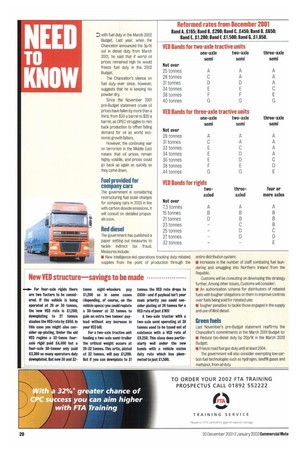New VED structure savings to he made
Page 20

If you've noticed an error in this article please click here to report it so we can fix it.
For four-axle rigids there ON two factors to be considered. lithe vehicle is being operated at 28 or 30 tonnes, the new VED rate is £1,200; downplating to 27 tonnes slashes the VED rate by £650.1n this case you might also consider up-plating. Under the old VED regime a 32-tonne fouraxle rigid paid £4,490 but a four-axle 30-tonner only paid £3,380 so many operators duly &Armlets& But now 30 and 32
tonne eight-wheelers pay £1,200 so in some cases (depending, of course, on the vehicle specs) you could replate a 30-tanner at 32 tonnes to gain an extra two tonnes' payload without any increase in your VED bill.
For a two-axle tractive unit hauling a two-axle semi-trailer the critical weight occurs at 28-32 tonnes. This arts, plated at 32 tonnes, will pay £1,200, But if you can downplato to 31 tonnes the VED rate drops to £650—and if payload isn't your main priority you could consider plating at 28 tonnes for a VED rate of lust £105!
A two-axle tractor with a two-axle semi operating at 38 tonnes used to be taxed out of existence with a VED rate of £9,250. This class does particularly well under the new bands with a vehicle excise duty rate which has plummeted to just £1,500.




























































































































































